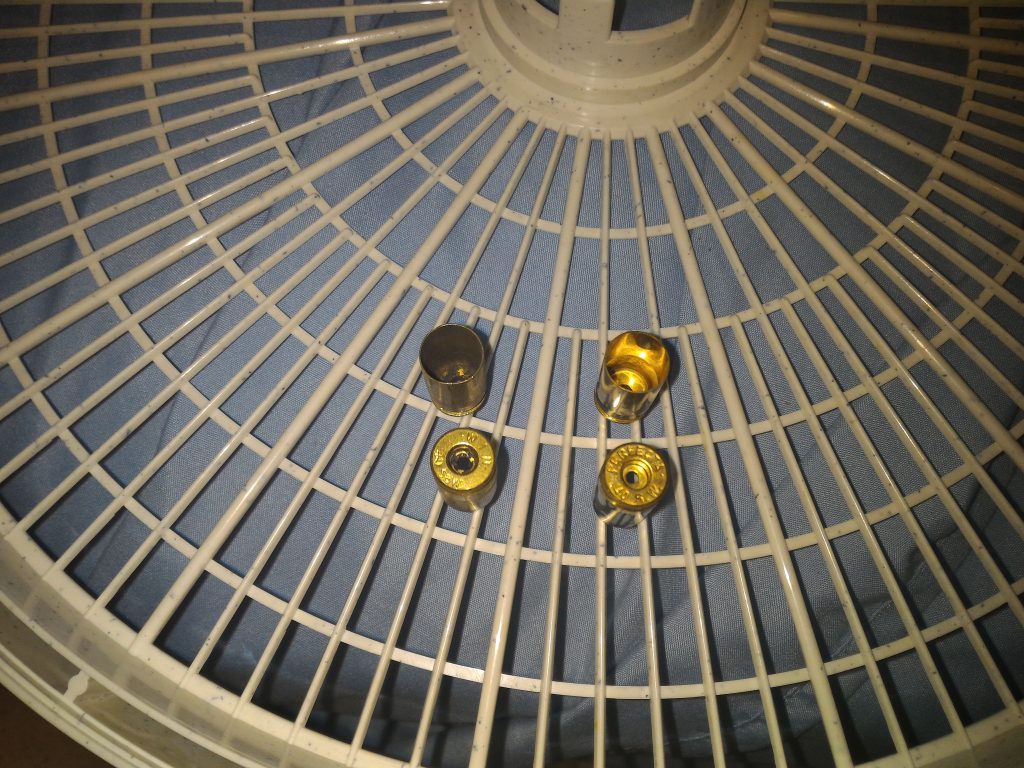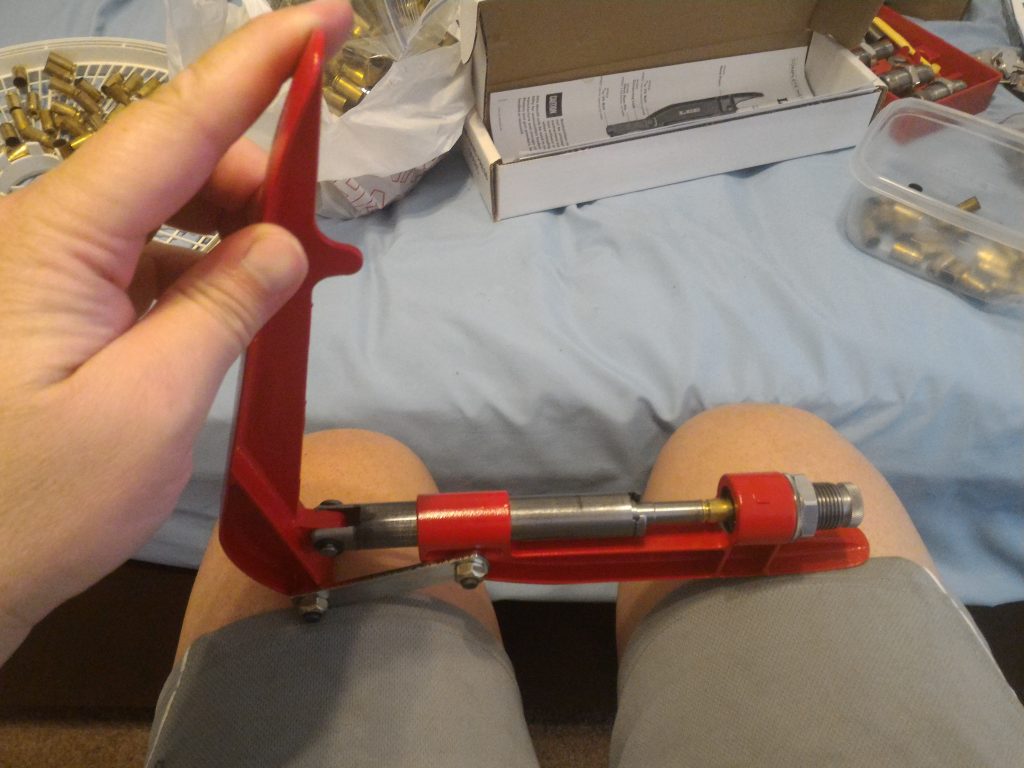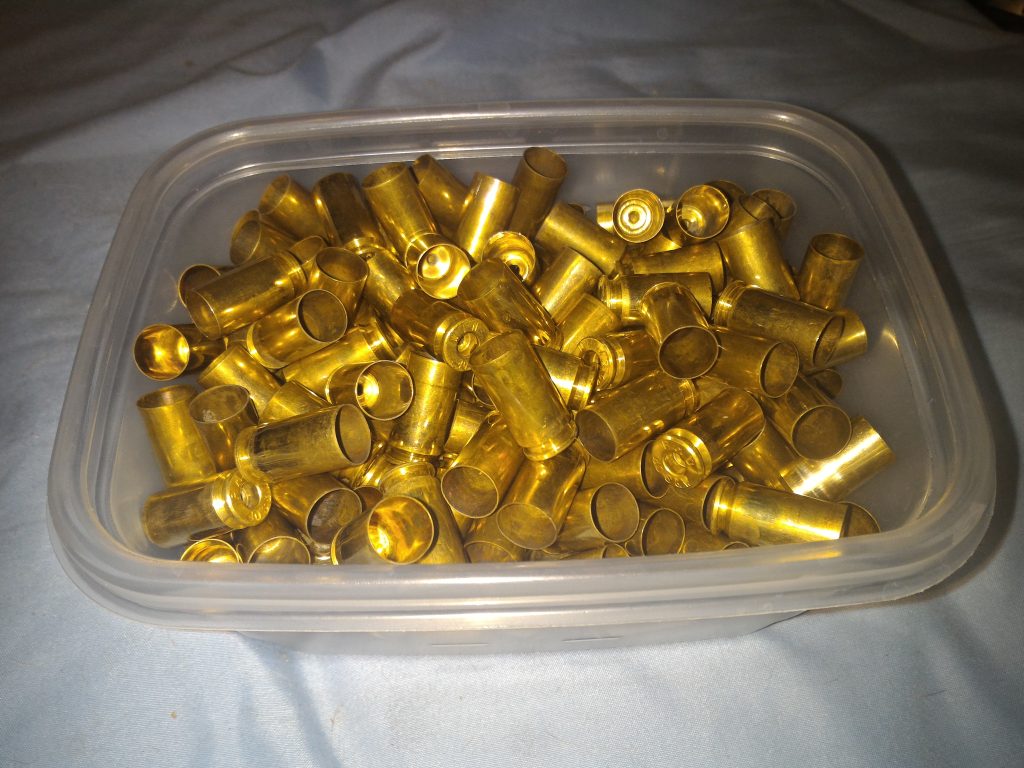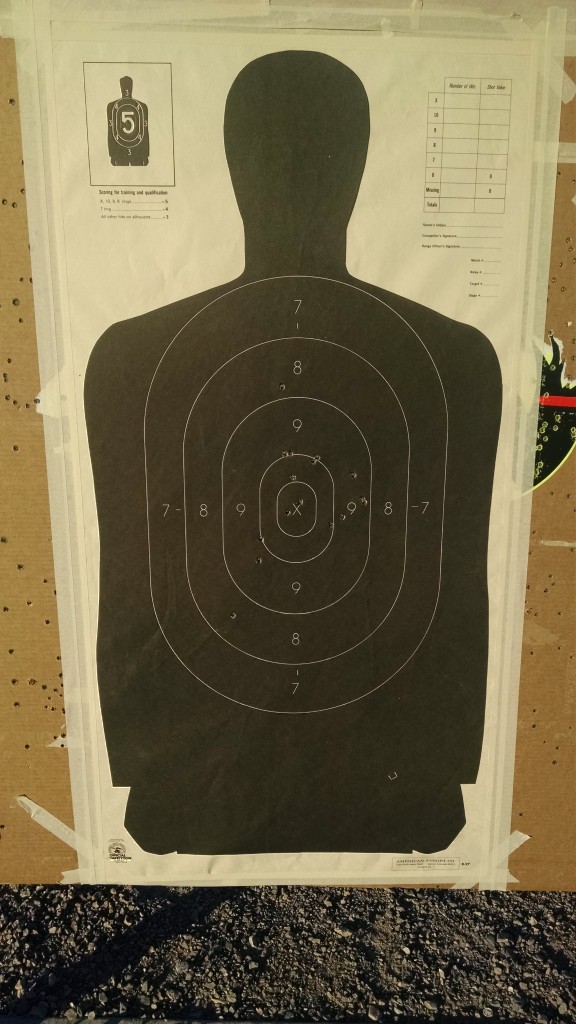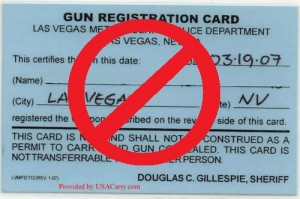A while back, I picked up a couple of gallon zip-locks full of .40 S&W brass at a gun show…should be about 2000 rounds between them. They’re range pick-ups, so they need work before they’re usable.
That’s a lot of brass to go through in the triple-digit heat we’ve been having, so I picked up a handheld reloading press so that I might move some of this stuff indoors:
It arrived today, so after work I started going through my brass. Three things need to happen: the spent primers need to be removed, the brass needs a thorough cleaning, and then it needs to be “de-Glocked.” (Some .40 handguns (especially those from Glock, though I don’t think they’re the only offender) don’t fully support the round in the chamber. When fired, the unsupported area bulges out a bit more than the rest. De-Glocking forces this area back into shape so it’ll feed properly.)
First, decapping (or primer removal). I’ve always used a universal decapping die for this to keep my sizing dies from getting crudded up:
Primers accumulate inside the ram until it fills up, at which point you tip them out into the trash.
Next, it’s into the pool. They spend 24 minutes in the ultrasonic cleaner in a 50/50 mix of white vinegar and water, with a drop or two of dish soap:
It doesn’t take long at all for the cleaning solution to turn cloudy. After cleaning, the acid is neutralized by 8 minutes in water with some baking soda, at a half-tablespoon per gallon. They’re then rinsed twice for 8 minutes at a stretch, and then spend 40 minutes in a food dehydrator on high heat, drying out. Have a look at these before-and-afters:
I then de-Glock them with a mix of parts in the press: the ram pusher from a .401″ bullet-sizing die set and the “factory crimp” die from the reloading die set, the latter with the crimping insert and adjustment knob removed. It has a carbide insert at the bottom which sizes the case before crimping; the pusher from the sizing die set is used to push the entire shell through. Lee also makes a “bulge buster” die set for this purpose, but if you’re casting as well as reloading, you already have all the bits you need:
Some of these take a bit more effort than others. The ones with a “CBC” headstamp are particularly difficult, often needing the press to be placed on the floor to put more force into the handle. Others aren’t much more difficult than they were for decapping (which is really light effort). Not all .40 S&W brass gets fired from Glocks, but enough of it does that the only safe approach is to de-Glock all of it. I have an aftermarket barrel (from Lone Wolf) for my Glock 23, so de-Glocking should be a one-time affair for new-to-me brass.
Once it’s all done, you have nice, clean brass that’s ready to reload:


